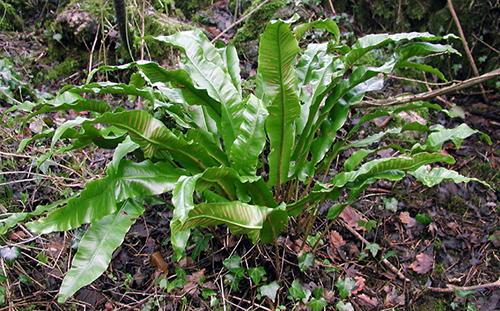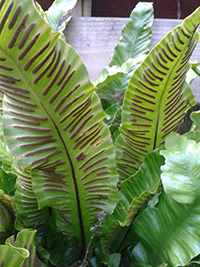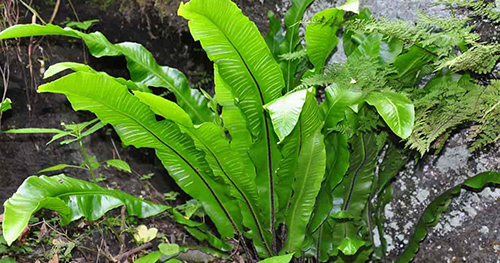Contents
The great Greek physician, pharmacologist, botanist, and author Pedanius Dioscorides already used the hart’s tongue fern, who said that “it has the virtue of consuming the spleen.” Since then, it has been employed to treat splenomegaly (the increase of the spleen volume). In ancient times, it was given to alcoholic people who frequently suffered from blood congestion in their spleen. However, it was not very successful in this case.

Healing Properties and Indications
The fronds of this fern contain mucilage, tannin, sugars, and vitamin C. Due to their content in mucilage, the fronds have emollient (anti-inflammatory action on the mucous membrane and the skin) and expectorant properties. The tannins give them their astringent properties.
Hart’s tongue is used for bronchitis and colds to make secretions more fluid and ease their expulsion, as well as for colitis and gastritis to protect the digestive mucous membrane and reduce inflammation.
This fern also produces good hypertension results and normalizes blood pressure, though the active component that makes such an action is still unknown.
Because of its anti-inflammatory and skin-soothing properties, it is used to wash wounds externally. It also acts as a vulnerable plant and is applied to compress bruises.

Hart’s Tongue Scientific Facts
- French: Langue de cerf.
- Spanish: Lengua de ciervo.
- Environment: Walls, shady rocks, and calcareous soils of Europe and North America. Not very common.
- Description: A vivacious fern of the Polypodiaceae family, it has undivided, bright green, elongated (from 20 to 60 cm), arrow-tipped fronds.
- Parts of the plant used medicinally: The fronds (the leaves of ferns).

How to use Hart’s Fern
- Decoction with 30 g of fronds per liter of water, boiling for ten minutes. Drink four or five cups daily, sweetened with honey.
- Washing with the same decoction employed in internal use.
- Compresses with this decoction.
DISCLAIMER: All content on this website is presented solely for educational and informational objectives. Do not rely on the information provided as a replacement for advice, diagnosis, or treatment from a qualified medical expert. If you are pregnant, nursing, or have any preexisting medical concerns, talk to your doctor before using any herbal or natural medicines.
REFERENCES
- George D. Pamplona-Roger, M.D. “Encyclopedia of Medicinal Plants.” George D. Pamplona-Roger, M.D. Encyclopedia of Medicinal Plants. Ed. Francesc X. Gelabert. Vols. 1 San Fernando de Henares: Editorial Safeliz, 2000. 321. Print. [hart’s tongue]
- https://www.ncbi.nlm.nih.gov/pmc/articles/PMC5537771/
